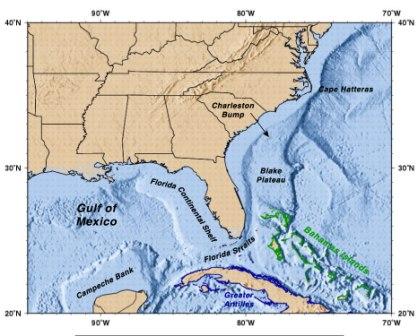|
RANGE
Dolphins, in general, live in temperate and tropical waters, absent only from 45 degrees latitude to the poles
in both the northern hemisphere and the southern hemisphere. The following map shows the world wide range of dolphins, courtesy
of the Smithsonian Friends of the National Zoo.

The Atlantic Bottlenose Dolphin ranges from Cape Cod to the Gulf of Mexico. Research has shown there to be two
basic Atlantic Bottlenose "populations". One population found along the coast of Virginia northward, migrates
north in the spring and south in the fall. Another population found along the southeastern coast of the U.S to the Gulf of
Mexico, does not migrate and remains in its home range year round.

Males tend to have a larger range than females. Adult females tend to create several relatively
defined groups in relatively limited areas, and males tend to travel from one female group to another to mate. Through scientific
observations of dolphin population density, the lowest density of Bottlenose dolphins appears to be over the ocean's continental
shelf, with higher densities along the coastline and near the continental shelf edge. Thus, population density appears to
be a function of water depth, sea surface temperature, distance from the shore, and quantity of available food.
Atlantic Bottlenose Dolphin populations have
been studied by aerial survey technique in order to estimate their numbers. A crew including a pilot, marine mammal observers
and data recorders are required.
When a population of dolphins is sighted
and identified, the aircraft circles the herd to estimate its number. The current Atlantic Bottlenose Dolphin population
is estimated to be 79,000, with 12,000 in the Western Atlantic area and 67,000 along the coast of Florida and in the
Gulf of Mexico.
Site Content
Understanddolphins.com contains information condensed from a number of reputable technical sources,
peer reviewed journal articles, and respected dolphin research facilities, as well as from my personal experiences and
observations as a dolphin VIP Tour Guide and Educator.
I have made every attempt to support the information presented in this site with video and still
photographic images. On a regular basis I plan to produce more of these images and will continue to update the site with these
as well as with any new and scientifically verified information which becomes available.
|



